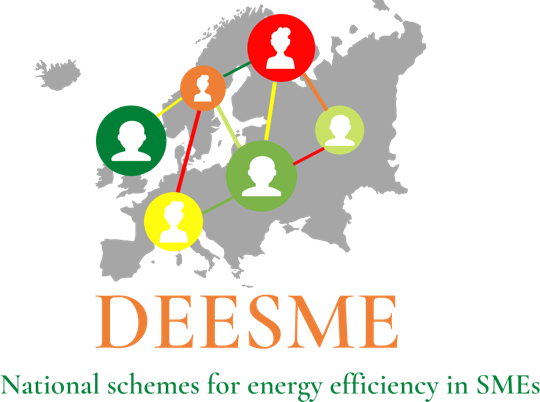The multiple benefits approach of energy audits – New report and tool from DEESME
Companies, especially SMEs tend to disregard the implementation of energy efficiency measures because they cannot discern the direct business benefit they will gain from them.
The approach is based on the concept of the business model that is used both as a diagnostic tool and as a business design tool for the advancement of business sustainability.
The business model can be considered as a master plan that describes the way in which a company creates value in order to meet its business objectives.
Hence, the DEESME multiple benefits approach not only relates energy decisions and initiatives with the attainment of the general business objectives, but also introduce concepts of energy efficiency and sustainability in business model analysis.
In order to put the business model into effect a company needs to carry various processes and activities. These processes and activities, in conjunction with the related resources and capabilities and their coordination along the company’s value chain, will deliver the business value.
To introduce the multiple business and non-energy benefits that can derive complementarily from the development of energy efficiency policies and measures, we employ the business modelling analytical framework. The business model serves as a diagnostic tool for the description and understanding of the ‘business logic’, the current business situation, practices and objectives and provides the basis for the multiple benefits analysis that spans energy auditing beyond energy efficiency and relates it to the attainment of the general business objectives. The business model analysis concludes also the DEESME multiple benefits approach by seeking the improvement or the innovation of the business model through the lens of the energy efficiency analysis and the multiple benefits identification that have been preceded.
The DEESME methodology incudes four stages:
a) it begins with the business model analysis that demonstrates the underlying business logic and the business priorities for the creation of value and the improvement of business efficiency;
b) it continues with the energy efficiency analysis that reveals the opportunities for energy efficiency and reduced energy emissions;
c) it culminates with the multiple benefits analysis that recognizes and evaluates business benefits that expand the scope of energy management and relate energy efficiency decisions to business development;
d) it concludes with the business model sustainability advancement that searches for opportunities for business model innovation and improvement through the advancement of business sustainability.
The approach can be seen as a life cycle that promotes energy efficiency in the first place and contributes to the advancement of business sustainability, as it begins with business model analysis as a diagnostic tool and ends with the review of the business logic through the prism of energy efficiency measures for the development of business model innovation and improvement.
The proposed multiple benefits approach will motivate SMEs to see energy management from a new perspective that connects energy efficiency to business development and improvement. It aspires to change the perception of energy audits as regulatory obligations performed through bureaucratic procedures – that are met quite often at the expense of the company and without any real business benefit for the company. This new perspective will enable business managers to see the managerial implications of energy management and how it can support business efficiency and improvement. The role of the energy auditor/ consultant is broadened to include also guiding companies to the identification of the
business benefits that can go along with energy efficiency measures.
The next activities include the development of training material and activities for the mobilization of energy auditor/ consultant and business managers to adopt the multiple benefits approach as a part of the implementation of energy auditing and energy management systems.
Keywords: energy audit, energy management system, multiple benefits, business model, business logic, business model canvas, carbon footprint, cost analysis.
